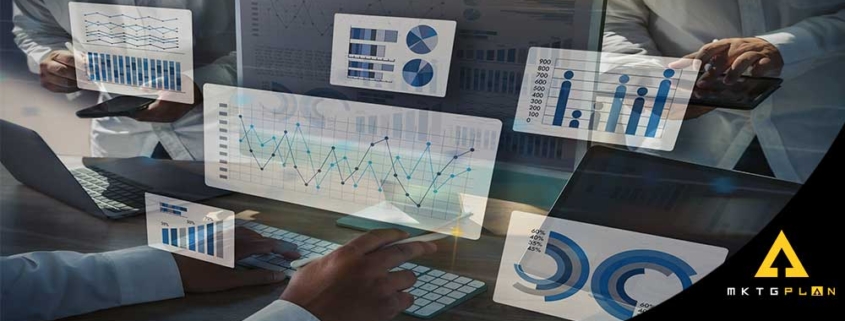The Comprehensive Guide to SEM Benefits: Elevating Your Brand Online
In the ever-evolving world of digital marketing, standing out amidst a sea of competitors is a challenge every brand faces. Enter Search Engine Marketing (SEM), a powerful tool that can elevate your brand’s online presence. SEM, often overshadowed by its cousin, Search Engine Optimization (SEO), is a dynamic and targeted approach to digital marketing that can yield immediate and impressive results.
Understanding the importance of SEM in today’s digital landscape is crucial for any business looking to thrive online. With the majority of consumer journeys beginning on search engines, the ability to quickly capture attention and drive targeted traffic is invaluable. SEM offers a direct line to your potential customers, positioning your brand exactly where and when it’s needed. In an era where online visibility equates to business success, SEM’s role is not just significant; it’s essential.
Understanding SEM: Basics and Key Concepts
Definition of SEM and How it Differs from SEO
At its core, Search Engine Marketing is a marketing strategy designed to increase a website’s visibility in search engine results pages (SERPs) through paid advertising. While SEO focuses on optimizing a website to rank higher organically, SEM leverages paid advertising to guarantee visibility. This distinction is crucial; SEO is a marathon, a long-term strategy, whereas SEM is a sprint, offering immediate visibility.
Key Components of SEM
- Paid Search Ads: These are the ads that appear at the top or bottom of SERPs, marked as ‘Ad’. They are the most direct form of SEM, offering instant visibility.
- PPC (Pay-Per-Click): PPC is the model used in SEM where advertisers pay a fee each time their ad is clicked. It’s a way of buying visits to your site, as opposed to earning them organically via SEO.
- CPC (Cost-Per-Click): CPC is the actual price you pay for each click in your PPC campaigns. It’s a key metric to track to ensure you’re getting a good return on your SEM investment.
- Ad Auctions: This is the process by which search engines decide which ads to show for a specific keyword and in what order. Advertisers bid on keywords relevant to their target market, and the winning ads appear in the SERPs.
Understanding these components is the first step in harnessing the power of SEM to propel your brand forward. In the following sections, we will dive deeper into how to effectively leverage these components, integrate SEM into your broader marketing strategy, and navigate the challenges of this dynamic digital marketing tool.

The Benefits of SEM for Businesses
Immediate Visibility and Quick Results
One of the most compelling advantages of SEM is its ability to provide immediate visibility and quick results, a stark contrast to the slower pace of SEO. While SEO is a long-term strategy that can take months to bear fruit, SEM can place your brand at the top of search engine results almost instantly. This rapid visibility is particularly beneficial for new product launches, seasonal promotions, or any scenario where time-sensitive visibility is crucial.
Targeted Audience Reach
SEM’s power lies not just in visibility, but in its precision targeting. With SEM, you can tailor your ads to reach specific demographics, geographic locations, and even user behaviors. This level of targeting ensures that your ads are seen by the audience most likely to be interested in your products or services. Whether it’s targeting by age, interests, or search behavior, SEM allows for a level of specificity that other advertising forms can’t match.
Enhanced Brand Awareness
Even when users don’t click on your ads, the mere presence of your brand at the top of search results can significantly boost brand awareness. This increased visibility reinforces your brand’s presence in the user’s mind, which can have long-term benefits for brand recall and recognition. SEM acts as a brand reinforcement tool, ensuring that your brand remains visible and relevant in the highly competitive online space.
Measurable and Trackable Results
One of the most attractive aspects of SEM is its measurability and trackability. Tools like Google Analytics provide a wealth of data on your SEM campaigns, allowing you to monitor metrics such as click-through rates (CTR), conversion rates, and return on investment (ROI). This data is invaluable in assessing the effectiveness of your campaigns and making data-driven decisions to optimize your SEM strategy.
Integrating SEM with Overall Digital Marketing Strategy
Synergy with SEO
While SEM and SEO are distinct strategies, they complement each other beautifully. SEM can provide immediate visibility and traffic, which can be particularly useful in the early stages of a website‘s SEO strategy. Meanwhile, the insights gained from SEM (such as keyword performance and user behavior) can be invaluable in refining your SEO strategy. Together, SEM and SEO can create a more robust and effective online presence for your brand.
SEM’s Role in Multi-Channel Marketing
In today’s digital marketing landscape, relying on a single channel is no longer enough. SEM plays a vital role in a multi-channel marketing strategy, complementing efforts in social media marketing, content marketing, and beyond. By integrating SEM with other channels, you can create a cohesive and comprehensive digital marketing strategy that leverages the strengths of each channel to support and amplify the others.
Best Practices for Effective SEM
Keyword Research and Selection
The foundation of a successful SEM campaign lies in effective keyword research and selection. Choosing the right keywords requires understanding your audience’s search behavior and aligning it with your business goals. Here are some tips:
- Use Keyword Research Tools: Leverage tools like Google Keyword Planner to find keywords relevant to your business with a high search volume and manageable competition.
- Understand Search Intent: Select keywords that match the intent of your target audience—whether they are looking for information, a specific product, or a local service.
- Consider Long-Tail Keywords: These are more specific and less competitive, often leading to higher conversion rates as they align closely with user intent.
Crafting Compelling Ad Copy
Your ad copy is the first point of contact with your audience, so it must be compelling:
- Highlight Unique Selling Points (USPs): Clearly articulate what makes your product or service stand out.
- Use a Strong Call-to-Action (CTA): Encourage users to take the desired action, whether it’s to make a purchase, sign up, or learn more.
- A/B Testing: Regularly test different versions of your ad copy to see what resonates best with your audience.
Landing Page Optimization
A well-optimized landing page is crucial for converting clicks into customers:
- Align with Ad Objectives: Ensure your landing page directly reflects the promise made in your ad.
- Clear and Concise Messaging: Avoid clutter and focus on a single, compelling message.
- Optimize for Conversion: Include a strong CTA and make the user journey to conversion as seamless as possible.
Budget Management
Effective budget management is key to maximizing your SEM investment:
- Set Clear Objectives: Define what you want to achieve with your budget, be it brand awareness, lead generation, or sales.
- Monitor and Adjust Bids: Regularly review your campaign performance and adjust bids to optimize for cost-effective results.
- Use Bid Adjustments: Utilize bid adjustments to increase or decrease your bids in specific scenarios (like time of day, location, etc.).

Case Studies: Success Stories in SEM
- E-commerce Store Increases Sales by 150%: An online retailer used SEM to target high-intent keywords, coupled with compelling ad copy and optimized landing pages, leading to a significant increase in sales and ROI.
- Local Service Provider Dominates Market: By focusing on local keywords and geo-targeting, a local service provider was able to dominate their market, resulting in a 200% increase in leads.
- Startup Achieves Brand Visibility: A new tech startup utilized SEM to quickly gain visibility in a competitive market, boosting their brand awareness and securing initial customer base.
Challenges and Considerations in SEM
Potential Challenges
- Budget Constraints: Effectively managing an SEM budget is a common challenge, especially for small businesses. Balancing cost and ROI is crucial to ensure that the SEM campaign is sustainable and profitable.
- Changing Algorithms: Search engines frequently update their algorithms, which can significantly impact SEM strategies. Staying informed and adaptable is key to maintaining campaign effectiveness.
- Competition: As more businesses turn to SEM, the competition for keywords and visibility intensifies, leading to higher costs and the need for more innovative strategies.
Ethical Considerations and Adherence to Advertising Guidelines
- Transparency: It’s essential to be honest and clear in your advertising. Misleading ads not only harm your brand’s reputation but can also lead to penalties from search engines.
- Compliance with Guidelines: Adhering to the advertising guidelines set by search engines ensures that your campaigns remain active and effective.
| Challenge/Consideration | Description |
| Budget Management | Balancing cost with ROI to sustain campaigns |
| Algorithm Changes | Adapting to frequent updates from search engines |
| Competition | Innovating to stay ahead in a crowded market |
| Ethical Advertising | Maintaining honesty and clarity in ads |
| Guideline Adherence | Complying with search engine advertising rules |
The Future of SEM
Emerging Trends
- Voice Search: With the increasing use of voice assistants, optimizing for voice search will become crucial in SEM. This includes focusing on conversational keywords and questions.
- AI in Ad Targeting: AI and machine learning are becoming more integral in optimizing ad targeting, helping to deliver more personalized and effective ads.
Predictions for SEM Evolution
- Increased Personalization: The future of SEM will likely see a shift towards more personalized ads, tailored to individual user preferences and behaviors.
- Greater Integration with Other Channels: SEM will continue to integrate more seamlessly with other marketing channels, such as social media and content marketing, for a holistic marketing approach.
Conclusion
As we’ve explored throughout this comprehensive guide, Search Engine Marketing (SEM) offers a multitude of benefits that can significantly elevate your brand’s online presence. From immediate visibility and quick results to targeted audience reach and enhanced brand awareness, SEM is a robust tool in the digital marketer’s arsenal. Its ability to provide measurable and trackable results, coupled with its synergy with SEO and integration into a multi-channel marketing strategy, makes SEM an indispensable component of effective digital marketing.
The key to successful SEM lies in understanding its components, from keyword research to crafting compelling ad copy, optimizing landing pages, and managing budgets effectively. By navigating the challenges and considerations in SEM, such as budget constraints, changing algorithms, and ethical advertising practices, businesses can harness the full potential of SEM to achieve their marketing goals.
Looking to the future, SEM is poised to evolve with emerging trends like voice search and AI in ad targeting, offering even more opportunities for businesses to connect with their audiences in meaningful and impactful ways.
As we conclude, we encourage businesses to embrace SEM as a vital part of their digital marketing strategy. The landscape of online marketing is dynamic and competitive, and SEM provides a powerful means to stand out and succeed.
Additional Resources
To further enhance your knowledge and skills in SEM, here are some additional resources:
- Google Ads Help Center: A comprehensive resource for learning about and managing Google Ads campaigns.
- Moz Blog – SEM Section
- :
Insights and tips from industry experts on SEM strategies and best practices.
- SEMrush Academy: Free courses and certifications on SEM and digital marketing.
- HubSpot Blog – SEM Articles: A collection of articles offering practical advice and strategies for SEM.
- Search Engine Land: Stay updated with the latest news and trends in SEM and digital marketing.



